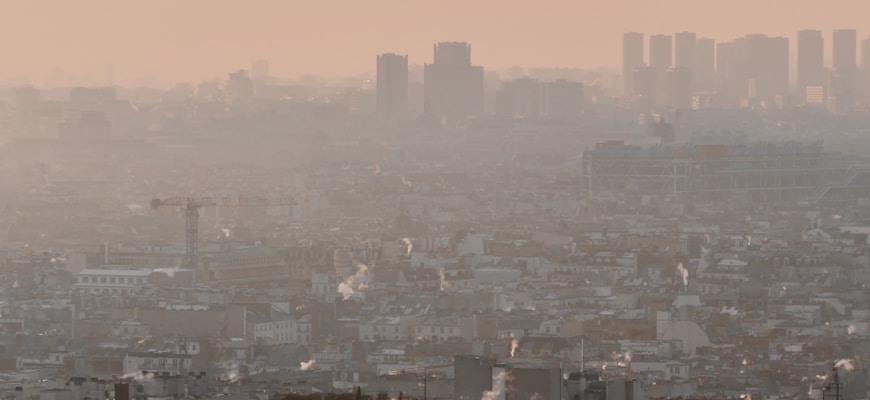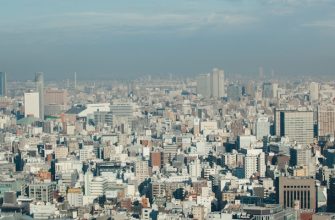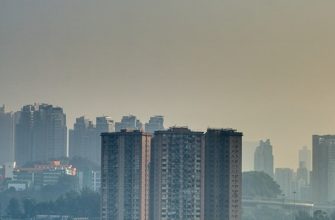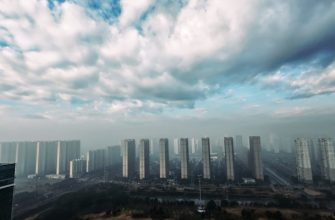- Understanding Urban Air Pollution: Sources and Effects
- Protective Measures: How to Shield Yourself from Airborne Contaminants
- Breathing Easy: Tips for Improving Indoor Air Quality
- The Role of Urban Planning in Reducing Air Pollution
- Health Impacts of Air Quality: What You Need to Know
- Community Initiatives: Joining Forces to Combat Air Pollution
Understanding Urban Air Pollution: Sources and Effects
Urban air pollution is a significant issue affecting the health of millions of people in cities around the globe. Understanding the sources and effects of this pollution is crucial for mitigating its impact on well-being. The primary sources of urban air pollution include vehicular emissions, industrial discharges, construction activities, and residential heating.
- Vehicular Emissions: Cars, trucks, and buses are major contributors to poor air quality. They release harmful pollutants such as nitrogen oxides, carbon monoxide, and particulate matter.
- Industrial Discharges: Factories and power plants emit a variety of toxic substances that can severely degrade air quality, including sulfur dioxide and volatile organic compounds.
- Construction Activities: Dust and emissions from construction sites add to the already high levels of pollution in urban areas.
- Residential Heating: Burning fossil fuels for heating purposes can contribute to elevated levels of particulate matter and other harmful pollutants.
The effects of urban air pollution on health are profound and multifaceted. Exposure to polluted air can lead to respiratory diseases, cardiovascular problems, and even premature death. Vulnerable populations, such as children and the elderly, are particularly at risk.
In addition to physical health issues, air pollution can also have psychological effects, leading to increased stress and anxiety levels among urban dwellers. Understanding these sources and effects is essential for developing effective strategies to protect health in polluted urban environments.
Protective Measures: How to Shield Yourself from Airborne Contaminants
Ensuring protection from airborne contaminants is essential for maintaining health in urban environments. Air pollution, a significant issue in cities, can adversely affect respiratory health and overall well-being. Implementing effective protective measures can mitigate the risks associated with polluted air.
- Use Air Purifiers: Investing in high-quality air purifiers can significantly reduce indoor air pollution. These devices filter out harmful particles, allergens, and pollutants, providing cleaner air.
- Wear Masks: During high pollution days, wearing masks designed to filter fine particulate matter can be an effective way to shield the respiratory system from harmful contaminants.
- Limit Outdoor Activities: Reducing outdoor exposure, especially during peak pollution hours, can decrease the inhalation of airborne toxins. Staying indoors during smog alerts is advisable.
- Improve Ventilation: Ensuring proper ventilation in living spaces helps to circulate air and reduce indoor pollutant concentrations. Opening windows and using exhaust fans can enhance air quality.
- Utilize Indoor Plants: Certain indoor plants can improve air quality by absorbing toxins and releasing oxygen. Incorporating plants into home decor can provide a natural air purification method.
- Stay Informed: Monitoring air quality indexes and pollution forecasts can help individuals make informed decisions about outdoor activities and health precautions.
By adopting these protective measures against airborne contaminants, individuals can significantly enhance their health and reduce the adverse effects of urban air pollution. Awareness and proactive strategies are key in the fight against the detrimental impacts of polluted air.
Breathing Easy: Tips for Improving Indoor Air Quality
Improving indoor air quality is essential for maintaining health, particularly in urban environments where air pollution is prevalent. Several strategies can be employed to enhance the air quality within homes and offices.
- Regular Ventilation: Ensuring proper airflow is crucial. Opening windows when outdoor air quality is acceptable can help refresh indoor air.
- Air Purifiers: Investing in a high-quality air purifier can significantly reduce airborne pollutants, including dust, pollen, and smoke, contributing to cleaner indoor air.
- Houseplants: Certain indoor plants have been shown to improve air quality by absorbing toxins and releasing oxygen. Examples include spider plants, peace lilies, and snake plants.
- Routine Cleaning: Regular dusting and vacuuming with HEPA filters can minimize dust accumulation and allergens, promoting a healthier living environment.
- Avoiding Indoor Pollutants: Limiting the use of products that emit volatile organic compounds (VOCs), such as certain paints and cleaners, can help maintain better air quality.
- Humidity Control: Keeping indoor humidity levels between 30% and 50% can prevent mold growth and reduce dust mites, both of which can negatively impact air quality.
Implementing these strategies can lead to a noticeable improvement in indoor air quality. By prioritizing a clean and healthy environment, individuals can protect their respiratory health and enhance overall well-being in urban settings.
The Role of Urban Planning in Reducing Air Pollution
Urban planning plays a crucial role in addressing air pollution in cities. Effective urban design can significantly reduce the levels of harmful emissions and improve the overall quality of life for residents. By implementing strategic measures, cities can create environments that promote better air quality.
- Green Spaces: Incorporating parks and green areas in urban planning helps absorb pollutants and provides cleaner air. Trees and vegetation act as natural filters, mitigating the effects of urban emissions.
- Public Transportation: Developing efficient public transport systems encourages the use of buses and trains over personal vehicles, which reduces traffic congestion and lowers air pollution levels.
- Mixed-Use Development: Planning neighborhoods that integrate residential, commercial, and recreational spaces minimizes the need for long commutes, thus decreasing vehicular emissions and improving air quality.
- Building Regulations: Establishing strict regulations for construction and renovation can limit the release of volatile organic compounds (VOCs) and other pollutants, contributing to healthier urban environments.
- Walkability: Designing walkable cities encourages residents to choose walking or cycling over driving, which not only reduces air pollution but also promotes physical health.
In conclusion, the role of urban planning in combating air pollution cannot be overstated. By prioritizing sustainable practices and creating well-designed urban environments, cities can significantly enhance air quality, thereby protecting the health of their inhabitants. Addressing air pollution through thoughtful urban planning is essential for creating healthier urban communities.
Health Impacts of Air Quality: What You Need to Know
Air pollution in urban areas has a significant impact on public health, affecting millions of people worldwide. Understanding the health effects of air quality is essential for individuals living in cities, where pollution levels are often at their highest. Poor air quality can lead to a variety of health issues, including respiratory diseases, cardiovascular problems, and even neurological disorders.
- Respiratory Issues: Exposure to pollutants such as particulate matter and nitrogen dioxide can aggravate asthma and lead to chronic obstructive pulmonary disease (COPD).
- Cardiovascular Problems: Studies indicate a strong link between air quality and heart diseases. Pollutants can contribute to high blood pressure, heart attacks, and strokes.
- Neurological Effects: Recent research suggests that long-term exposure to polluted air may increase the risk of cognitive decline and neurodegenerative diseases.
- Child Development: Children exposed to high levels of air pollution may experience developmental delays and increased risk of respiratory infections.
- Pregnancy Complications: Poor air quality has been associated with low birth weight, preterm births, and developmental issues in newborns.
To mitigate the health impacts of air pollution, individuals can take several proactive measures. Staying informed about local air quality indexes and limiting outdoor activities during high pollution days can significantly reduce exposure. Utilizing air purifiers indoors and opting for green spaces for exercise can also help maintain better health.
In summary, understanding the health impacts of air quality is crucial for urban dwellers. By taking steps to protect oneself from air pollution, individuals can improve their overall well-being and reduce the risk of associated health problems.
Community Initiatives: Joining Forces to Combat Air Pollution
Community initiatives play a crucial role in addressing air pollution in urban areas. By uniting efforts, local residents, organizations, and governmental bodies can effectively combat the detrimental effects of poor air quality on health. These collaborative actions not only raise awareness but also foster a sense of responsibility towards the environment.
- Awareness Campaigns: Educational programs and workshops can inform citizens about the sources and health impacts of air pollution. Understanding these factors is essential for individuals to take proactive measures to protect their health.
- Tree-Planting Drives: Increasing green spaces in cities can significantly improve air quality. Community-led tree-planting initiatives help absorb harmful pollutants and provide cleaner air for all residents.
- Advocacy for Policy Changes: Engaging with local government to promote stricter regulations on emissions can lead to improved air quality. Communities can lobby for policies that prioritize public health and environmental sustainability.
- Car-Free Days: Organizing events that encourage walking, cycling, or public transport can help reduce vehicle emissions. These initiatives not only decrease air pollution but also promote healthier lifestyles among residents.
- Monitoring Air Quality: Community groups can collaborate with environmental organizations to monitor and report air quality levels. This data can empower residents to make informed decisions about outdoor activities and advocate for necessary changes.
By participating in these community initiatives, individuals contribute to a collective effort aimed at reducing air pollution. Each action, no matter how small, has the potential to create a healthier urban environment. As communities come together to fight air pollution, the overall well-being of city residents improves, leading to a more sustainable future.








